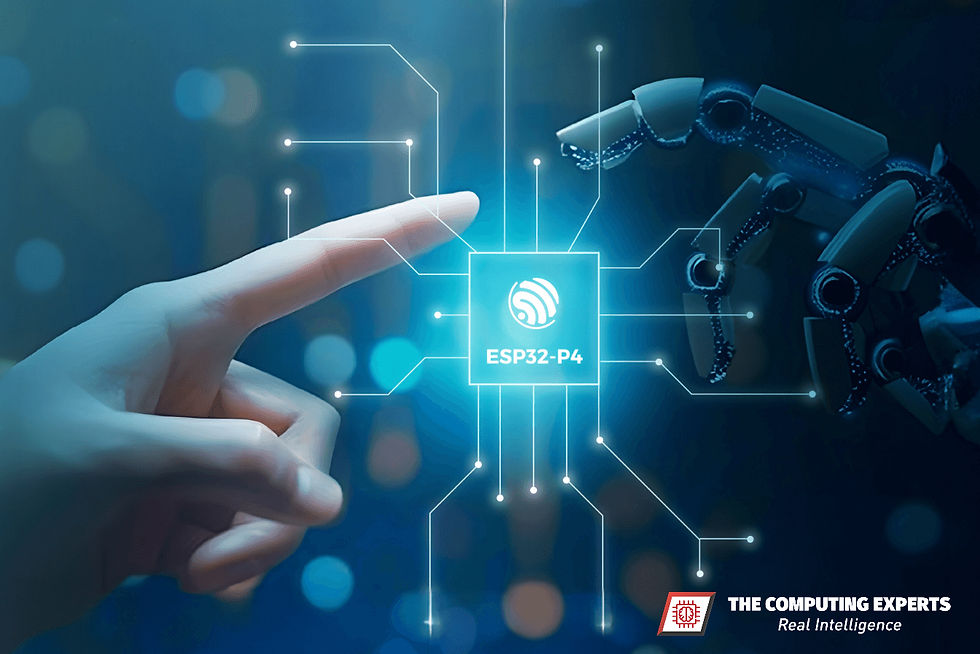
Espressif Systems has established a reputation for developing highly integrated, low-power wireless SoCs (System-on-Chip), particularly for applications in IoT (Internet of Things), smart devices, and automation systems. Their range of SoCs, including the ESP32-S3 and the latest ESP32-C5, and their various offshoots, cater to a wide range of embedded applications, providing robust solutions for engineers looking to integrate Wi-Fi, Bluetooth, Zigbee, and Thread connectivity.
As a user-friendly introduction to the Espressif SoC family, we outline their typical applications, and give you a handy detailed comparison table to help you find your perfect solution. Finally, we'll show you how to get started with these SoCs for your next project.
ESP8266 Series: Cost-Effective Wireless Connectivity
Applications: The ESP8266 is a well-known, affordable Wi-Fi SoC that offers 2.4 GHz Wi-Fi 4 connectivity. It is a preferred solution for projects that require basic wireless capabilities without the need for high processing power or advanced security features. The ESP8266 is commonly found in smart home devices, industrial controllers, wireless sensors, and wearables.
Use Cases:
Wi-Fi-enabled light bulbs
Temperature monitoring systems
Low-cost wireless relays
ESP32 SoC Family: Versatile Wireless SoCs for IoT
The ESP32 family offers a wide range of models, each suited to different IoT needs. These SoCs feature both Wi-Fi and Bluetooth support, making them ideal for applications that require dual wireless connectivity. Most ESP32 variants include more powerful dual-core processors, advanced security features, and low-power modes, making them well-suited for both industrial and consumer applications.
ESP32 SoC:
Applications: The ESP32 SoC supports both Wi-Fi 4 and Bluetooth 4.2 (BR/EDR + LE), making it a great choice for projects that require Bluetooth communication alongside Wi-Fi, such as smart speakers, fitness trackers, or security systems.
Use Cases:
Smart speakers
Wearable fitness devices
Home automation hubs
ESP32-S2:
Applications: The ESP32-S2 is optimized for applications requiring Wi-Fi 4 without the need for Bluetooth. With its low-power consumption and rich GPIO support, it is perfect for smart home applications, like smart light switches, connected sensors, and industrial automation systems.
Use Cases:
Connected home devices
Wireless sensors
Low-power industrial automation
ESP32-S3:
Applications: With its dual-core Xtensa LX7 processor and support for both Wi-Fi 4 and Bluetooth 5.0 (LE), the ESP32-S3 is ideal for high-performance applications that require advanced wireless communication and real-time processing, such as face recognition, image processing, and machine learning at the edge.
Use Cases:
AI-enabled devices
Image processing and recognition
Smart cameras
ESP32-C Series: RISC-V Powered for the Future
Espressif has moved towards adopting RISC-V architecture with the ESP32-C series, enabling engineers to leverage an open-source processor that brings improved performance and reduced power consumption, particularly in IoT use cases.
ESP32-C3:
Applications: The ESP32-C3 is a single-core RISC-V SoC offering Wi-Fi 6 and Bluetooth 5.0 (LE). It is designed for low-power IoT devices that require reliable wireless communication, ideal for battery-operated products like wearables and sensor networks.
Use Cases:
Wearables with extended battery life
Smart locks and switches
Battery-powered sensors
ESP32-C5 and ESP32-C6:
Applications: The ESP32-C5 and ESP32-C6 extend the capabilities of the C3 by adding support for Zigbee and Thread, crucial for smart home automation systems and industrial IoT deployments. With support for 2.4/5 GHz Wi-Fi 6, these SoCs are future-proof, making them great choices for wireless mesh networks.
Use Cases:
Zigbee and Thread mesh networks
Industrial wireless controllers
Advanced home automation
ESP32-H2: Zigbee and Thread for Wireless Mesh Networks
Applications: The ESP32-H2 supports Zigbee 3.0, Thread, and Bluetooth 5.0 (LE). This SoC is ideal for wireless mesh networks where communication between devices must be efficient and secure, making it perfect for smart lighting systems, wireless sensors, and building automation.
Use Cases:
Wireless mesh lighting systems
Smart building automation
Secure, energy-efficient IoT networks

ESP32-P4: Industrial-Grade Performance
The ESP32-P4 is positioned as a high-performance, budget SoC that provides industrial-grade processing power while maintaining cost efficiency. It targets applications that require a balance between performance and affordability, particularly in areas such as industrial automation, real-time data processing, edge computing, and AI/ML inference.
Unlike higher-cost solutions in similar performance categories, the ESP32-P4 features a RISC-V dual-core processor and extensive GPIOs, making it an attractive choice for engineers who need advanced capabilities without the premium pricing associated with more specialized SoCs. Its emphasis on features like Wi-Fi (under NDA), high-speed processing, and low-power operation allows it to serve sectors that traditionally relied on more expensive or power-hungry processors.
The ESP32-P4 is for engineers who seek a versatile, powerful, yet cost-effective SoC for applications like industrial controllers, IoT gateways, and smart devices, where higher performance is needed but budget constraints are a concern.
Use Cases:
High-performance industrial controllers
Real-time AI and ML processing
Edge computing
Espressif SoC Comparison Table
To make your life easier, here's a quick comparison of Espressif SoCs, highlighting key specifications like processor type, RAM, GPIO count, and wireless connectivity options. There is a pdf link to the latest datasheet, making it easy to dive deeper into the specifications of each module (except the P4 at time of writing).
Engineers can use this table to quickly assess which SoC best suits their project’s requirements, whether it's low-power sensor networks, smart home automation, or AI-powered devices. Simply scroll through the rows to compare connectivity options (Wi-Fi, Bluetooth, Zigbee, Thread), processing power, and GPIO availability. The datasheet links provide additional technical insights for more complex design decisions.
Call to Action
Ready to get started with Espressif’s SoCs? At Ineltek, we provide expert guidance, and unrivalled support for integrating these versatile chips into your projects. Whether you’re looking for a cost-effective solution for home automation or need industrial-grade performance, our team of FAEs is here to help.
Contact Us today to discuss your project requirements and learn how Espressif SoCs can power your next innovative solution!